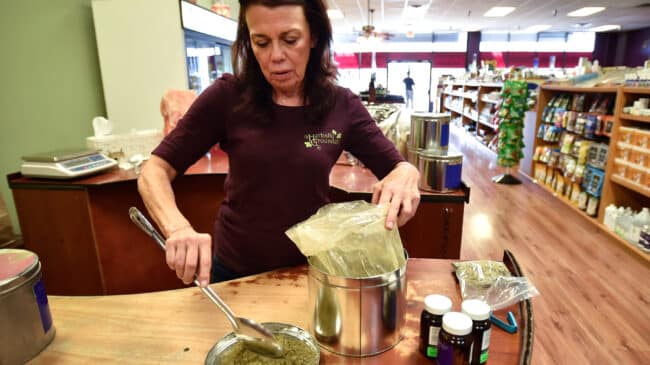Humans are naturally curious. When we see something new and unfamiliar it elicits an almost uncontrollable response. Even if for just a brief moment, we become enthralled with the new, unless and until we are satisfied it is not something we care about. This is why companies market products by the register in places like gas stations and liquor stores. A particular sect of these products tends to be marketed as stimulants, enhancers, and/or sedatives. Depending on the state, it may not be out of the ordinary for the patron of a gas station to walk in and find a product marketed as a “legal high,” something that mirrors the illicit. At one point or another, that same patron, in that same gas station, could likely find several more products sold as “herbal remedies” designed to increase stamina or offer pain relief.
Products like these are not only sold in gas stations and liquor stores but can also be found in increasing supply all over the internet, sometimes imported from other countries. The attention that these products demand necessarily makes one consider a number of questions.
What are these products?
Are they safe?
Can they be trusted as they are marketed?
Are they legal?
The bottom line is that the wariness of the reasonable consumer should fluctuate depending on where these products are purchased, as the quality of the product is evidently variable. Some of these products are downright unsafe, while others may be virtually harmless. Undoubtedly, some products are more worthy than others, with the capability of having legitimate applications beyond mere recreation. However, these applications may never be discovered because, from a public policy standpoint, these products all get lumped together, doomed to a furtive abyss.
This policy brief focuses on two substances that fit the above description. They are each regularly sold to consumers across the country and are gaining in popularity, especially among younger demographics. Delta-8 THC is a relatively new phenomenon that has been introduced into consumer markets across the country, though it has been a known derivative of the cannabis plant for decades.
The brief will discuss the legality of delta-8 THC, including the significant role of the 2018 Farm Bill, in this analysis. Additionally, it examines whether or not delta-8 THC is truly legal at the federal level today and provides a forward-looking analysis as to any potential changes that are likely to come in the future.
This policy brief then explores concerns that a business has to contend with if it wants to manufacture and sell delta-8 products, as well as the policy considerations for regulators who want to focus their sights on these particular products.
After discussing delta-8, this brief turns to kratom, a substance similarly besieged by incoherent government policy as it gets regularly sold to consumers across the country. Kratom, which is marketed as an herbal supplement, is another substance that has been around for a long time but has seen a recent rise in interest for its potential recreational and therapeutic applications.
As with delta-8, this brief discusses the legal environment surrounding kratom, as well as the policy considerations that must factor into an effective regulatory scheme for this particular substance. The concluding discussion forges the overall approach that should be taken when dealing with new market entrants in these “underground” markets.
